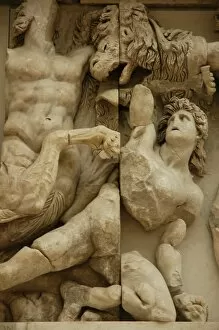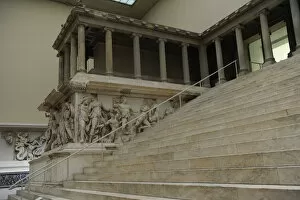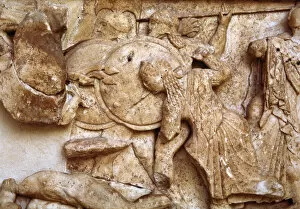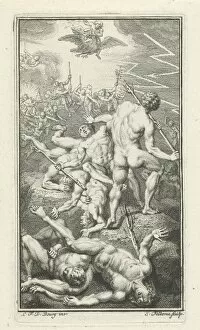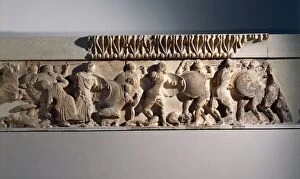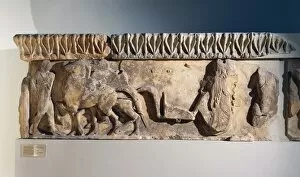Gigantomachy Collection (#2)
"Gigantomachy: A Mythological Battle of Epic Proportions" Step into the ancient world with the Pergamon Altar
For sale as Licensed Images
Choose your image, Select your licence and Download the media
"Gigantomachy: A Mythological Battle of Epic Proportions" Step into the ancient world with the Pergamon Altar, where larger-than-life sculptures depict the fierce battle known as gigantomachy. This monumental clash between gods and giants captivates our imagination even today. Witness Athena, goddess of wisdom and war, locked in combat with the formidable giant Alcyoneus. The power emanating from their struggle is palpable, showcasing the eternal struggle between intellect and brute force. Hephaistos, god of fire and craftsmanship, joins forces with Eos, goddess of dawn. Together they ride a majestic horse into battle against an imposing adversary. Their unity symbolizes the harmonious collaboration necessary to overcome immense challenges. In another scene on this 2nd-century BC Acropolis Altar stands Hecate, a mysterious goddess associated with magic and crossroads. She valiantly fights against Klytios ne - a colossal giant whose sheer size seems insurmountable. Goddess Rhea or Cybele commands attention as she rides upon a mighty lion beside her onlookers. Her regal presence signifies both strength and nurturing qualities that are essential in overcoming adversity. Artemis and Leto unite their powers to confront Otos head-on. These divine siblings demonstrate unwavering determination as they face off against one of mythology's most fearsome opponents. Leto once again takes center stage alongside Apollo in their epic encounter with Tityos. This awe-inspiring display showcases familial bonds tested by overwhelming odds – reminding us that love can conquer all obstacles. The Pergamon Altar also hints at other mythical figures such as Nyx or one of the Erinyes; these enigmatic beings add an air of mystery to this grand spectacle unfolding before our eyes. Olympus trembles underfoot as giants fall beneath its weight during this climactic showdown depicted on the Pergamon Altar.


